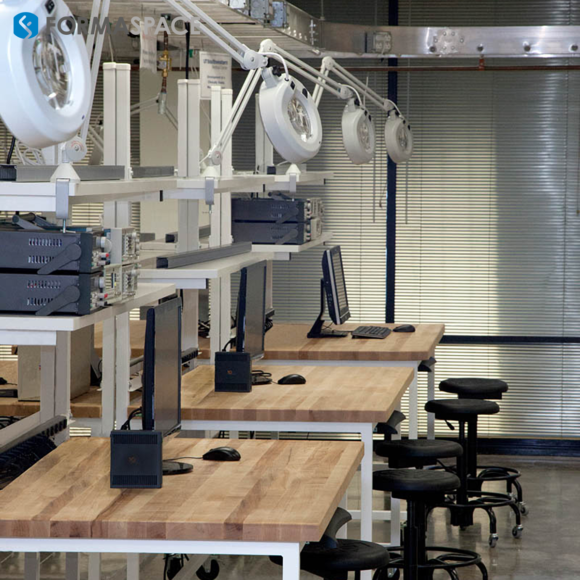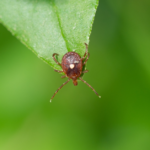Humans are Now Part of the Plastic Environment – the New “Plasticene” Age
Cue the Sarah McLachlan music.
For anyone who has been brought near to tears at the sight of animals in trouble, the image of a bird with a 6-pack beer/soda ring lodged around its neck is not only heartbreaking, it’s a poignant example of how plastic pollution is upending our environment.
Perhaps worse is what’s happening on the inside. Animals from birds to whales, sea turtles to salmon are mistaking plastic refuse for food, with dangerous consequences not only for them but for us.
Indeed, maybe scientists should rename our current Anthropocene age, calling it the “Plasticene” era instead, for that may well be how we’ll be remembered – embalmed in plastic.

How Microplastics Proliferate in the Food Chain
Production of plastics has ramped up significantly since World War II; experts estimate we’ve produced 10 billion tons to date, only 60% of which is captured in landfills.
The rate of plastic production increases each year, as does the amount of waste finding its way into waterways and oceans. The coastal pollution problem is particularly acute (on a per capita basis) in Panama, Guyana, Suriname, the Philippines, Malaysia, and countries along the west coast of equatorial Africa, but all nations are contributing to the problem of plastic pollution in the ocean.
As unwanted plastics enter the ocean, they can break down into smaller “microplastics” – ranging in size from 0 to 5 mm – allowing them to easily be ingested by wildlife and enter the food chain.
Laboratories Confirm Microplastics are entering the Human Blood Stream
We’ve known about the presence of microplastics in the guts of fish and other wildlife for quite some time as well as the presence of microplastics in sea salt, potable water, and beverages, such as beer.
So, it was probably inevitable that laboratory scientists at the Vrije Universiteit Amsterdam were able to detect the presence of plastics in human blood for the first time.
This discovery builds on previous research at the University of São Paulo, which identified the presence of airborne microplastics in human lung tissue as well as research from the San Giovanni Calibita Fatebenefratelli Hospital in Rome, which identified the first evidence of microplastics in human placentas.
The measurement technique used by the Dutch researchers to identify the presence of plastics in blood was a gas chromatography/mass spectrometry analysis performed at both low (80-350°C) and high temperatures (500-800°C) – a technique known as a Double Shot Pyrolysis.
They detected four common industrial plastic polymers (at concentrations of 1.6 μg/ml) in samples of human blood:
- Polyethylene terephthalate
- Polyethylene
- Styrene polymers (incl polystyrene, expanded polystyrene, acetonitrile butadiene styrene, etc.)
- Methyl methacrylate
Can We Predict the Long-Term Impact of Plastics Exposure on Human Health?

Now that we have confirmation that plastics have not only entered the human food chain, but also the bloodstream, how can we identify the long-term health consequences to human health?
There is a major concern that the ingestion of microplastics could cause cancer, heart disease, organ damage, inflammation, oxidative stress, as well as disruptions to our immune and endocrine (hormone) systems. Plastic particles might also become a novel vector for infections, as bacteria can bind to biofilms that can form on plastics.
However, we may have to rely on animal models to confirm this research, as it’s not ethical to purposefully expose humans to plastic – beyond what’s already happening in the natural environment.
But given these limitations, we can draw some preliminary conclusions about how plastics could move around within the body based on their size:
Plastics smaller than 150 μm can generally cross the lining of the stomach and intestines (gastrointestinal epithelium) although less than a percent are expected to be absorbed. An even smaller percentage of particles (circa 10 μm) could reach the organs or pass the blood-brain barrier. Other particles, smaller than 2.5 μm, could be absorbed and transported by M cells in the intestines, allowing them to reach the mucosa-associated lymph tissues. Microplastics could also directly enter the circulatory system by persorption, e.g. passing through the villus tips of the gastrointestinal tract.
Ideally, the body would be able to collect these plastic particles and excrete them out via stools, and indeed, the working assumption is we can excrete up to 90% of ingested plastics this way.
But, assuming this figure is correct, what happens to the 10% that remains? Does this amount of plastic simply build up over time, and if so, what are the long-term consequences?
Some studies are drawing worrying conclusions.
For example, studies trying to understand the mechanisms of polystyrene entering the have discovered that it can enter the primary human renal cortical epithelial (HRCE) cells in the kidneys as well as accumulate in the syncytiotrophoblasts of placental tissue.
There is still much to learn, but it’s possible that we soon may consider exposure to microplastics to be as dangerous to our health as cigarette smoking or exposure to asbestos pollution.
How Can We Gain Control of Plastic Pollution in the Environment?
One solution to the problem could be taking control of plastic pollution.
In March 2022, the UN announced that 175 nations had agreed to end plastics pollution, with a formal agreement to be published by the end of 2024. In concert with this agreement, the US announced a series of programs to control plastic pollution and step-up recycling efforts. But Europe has gone further and faster: the EU instituted a ban on single-use plastics in 2021 and is considering more regulations to control plastic pollution. Some US cities and states have followed suit, outlawing items such as plastic shopping bags, straws, and cutlery.

But efforts to restrict plastic pollution may be thwarted by the plans of oil companies, which are seeking to increase plastic production worldwide to compensate for losses in oil and gasoline sales due to the shift to electric vehicles.
Despite efforts to create a “circular economy” that recycles plastics as raw materials, efforts to recycle plastics have not worked as promised. According to a recent OECD study, as few as 9% of plastics are successfully recycled.
Perhaps nature will help solve the problem.
Researchers at the McKetta Department of Chemical Engineering at the University of Texas here in Austin used AI-based tools to create a unique hydrolase (enzyme), dubbed FAST PETase, that are capable of breaking down one of the most common plastics, PET, into component molecules which can be formed into new products.
Meanwhile, researchers at the University of Queensland in Australia have discovered that the Zophobas Morio ‘superworm’ is capable of eating polystyrene, which it can break down using a bacterial enzyme found in the worm’s gut.

Formaspace is Your Partner for Laboratory Research
If you can imagine it, we can build it, here at our factory headquarters in Austin, Texas.
Talk to your Formaspace Design Consultant today and find out how we can help you make your next laboratory build or remodeling project a success.













